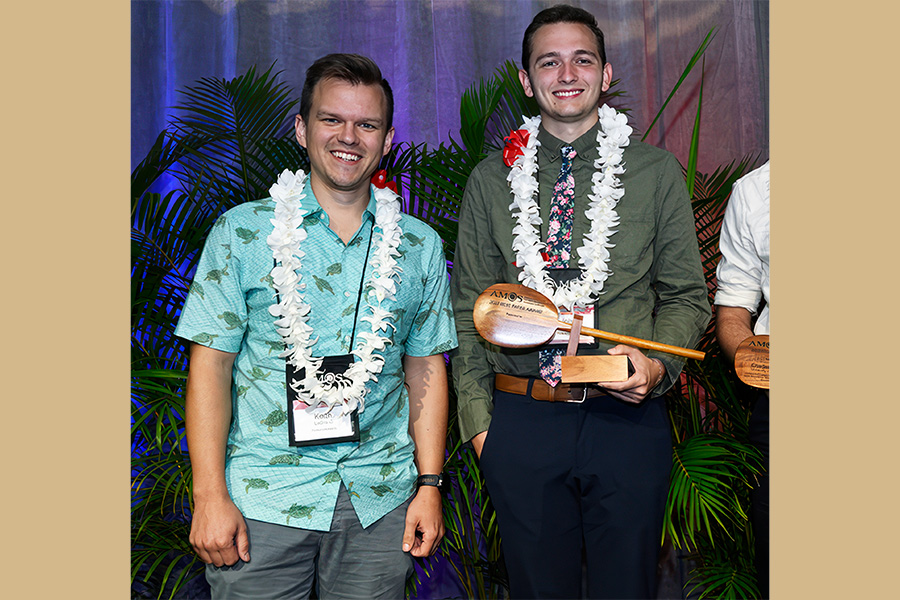Grad student wins Best Paper award at space surveillance technology conference
| Author: | Alan Cesar |
|---|

Purdue AAE graduate student John Iannamorelli demonstrated ways to track objects in the notoriously difficult orbital environment of cislunar space. His paper, co-authored with AAE assistant professor Keith LeGrand, won the Best Paper award at the 24th Advanced Maui Optical and Space Surveillance Technologies (AMOS) Conference.
“I was enormously proud of John’s accomplishment,” LeGrand says. “AMOS is considered the top scientific conference in the field of space situational awareness (SSA)/space domain awareness (SDA). They hosted more than 1,300 participants this year.”
In the cislunar region, spacecraft are subjected to competing gravity forces from both the Earth and moon. Traffic in this area is becoming busier, with NASA’s Artemis mission sending humans to the moon again in preparation for the Lunar Gateway space station, plus countries like India and Russia attempting to land uncrewed craft on the moon.
But working in this region requires careful navigation, which means knowing where everyone else is, too.
“We've been seeing an increasing interest in moving space operations to this region. To do so, we need to be able to track satellites, especially ones that we can't communicate with, while they operate and perform maneuvers. The trajectories of such satellites are highly unpredictable, so the typical methods of tracking maneuvering targets only work in a subset of simulations,” Iannamorelli says.

Another challenge in this space is in simply getting information on how other satellites are moving. Factors like whether the target is in direct sunlight or lit at an angle; obscured by the Earth or moon; or just not within view of Earth-based telescopes all result in sporadic and noisy information.
In his paper, titled, “Adaptive Filtering for Multi-Sensor Maneuvering Cislunar Space Object Tracking,” Iannamorelli described a new probabilistic filter that could effectively track these satellites based on little available information. This adaptive Bayesian filter, the paper says, can track an object through both ballistic and maneuvering phases of an Artemis I-like trajectory. Iannamorelli even went further to make recommendations on where telescopes could be placed to improve tracking in certain situations.
“One thing that stood out to me about this paper was John’s application of multiple research disciplines,” LeGrand says. “While the focus of the paper was on estimation and tracking theory, John applied advanced astrodynamics theory he learned from his graduate coursework to design notional cislunar space-based telescope orbits and an Artemis-I like target trajectory to serve as a test case for our tracking algorithm.”
This was Iannamorelli’s first paper as the first credited author. LeGrand says they went through many revisions to make sure it was well organized and easy to read, but still mathematically rigorous. Though Iannamorelli heard in advance that he was in the running for Best Paper, he wouldn’t know the outcome until after he’d presented.
“I was definitely nervous about getting up on the stage in front of such a large crowd in such a formal setting. I had practiced quite a bit, so once I was on stage presenting, it was definitely easier to be up there. Especially considering the stage lights that prevented me from being able to see the crowd,” he says.
“Hearing that I had won was definitely the highlight of the conference.”
